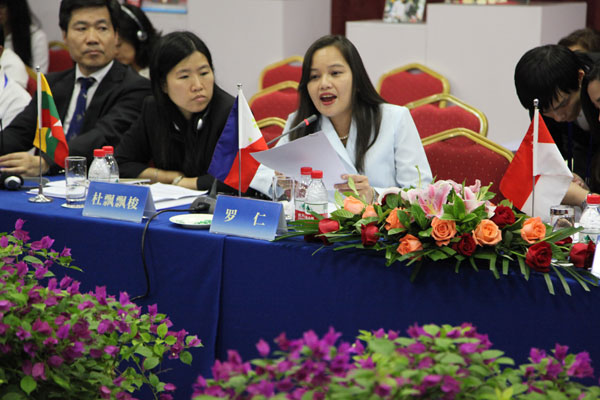
By Ms. Anna Rowena H. Sacristia,
Attache, Embassy of the Republic of Philippines in Beijing
In March 2001, UNESCO bestowed the title "Masterpieces of the Oral and Intangible Heritage of Humanity" to the Hudhud chants of the Ifugaos of Northern Luzon. This was followed in November 2005 by the proclamation of another Philippine oral and intangible heritage of humanity, the Darangen or Maranao epic chant.
The Hudhud Chants of the Ifugao
The Ifugaos are an upland tribal community who live in the mountainous Central Cordillera region of northern Philippines. They are the builders and caretakers of the Banaue Rice Terraces, the rice paddies carved into the mountains of Ifugao province by the ancestors of today's Ifugao tribe. With their perfectly-working irrigation systems and stone walls that reach as high as 50 feet, the rice terraces demonstrate not only the ingenuity of the Ifugao people but also their knowledge of hydraulic technology and outstanding stonemasonry.
There are four occasions when the Ifugaos recite and chant the hudhud, namely,1 and 2)) the harvesting and weeding of rice, 3) funeral wakes, and 4) bone-washing (bogwa) rituals.
The hudhud is estimated to have begun before the 7th century. The hudhud chant is comprised of more than 200 stories with about 40 episodes each story. Each story often takes three to four days to recite. The language of the chants is said to be almost impossible to transcribe as it is full of repetitions, synonyms, figurative terms and metaphors. The lead chanter of the hudhud, called the munhaw-e and who is often an elderly woman, recites an introductory line that will set the tone, which is continued by a chorus of women, called the mun'abbuy, until the end of the phrase. This sequence is repeated up to the end of each episode.
A tribute to Ifugao heroes, heroines, wealth and culture, the hudhud demonstrates the creativity of the Ifugao people.
It is unfortunate that written examples of hudhud are very rare. And since it is chanted during harvesting of rice which has become mechanized and during funeral wakes it has been replaced by the radio or music CDs, the number of cultivators of this cultural heritage continues to decline. The few people who know the chants are very old and the younger generations do not show much interest in this tradition.
This is why the action plan of the Philippine Government includes the publication of historical and ethnological iconographs, as well as festivals and indigenous ceremonies featuring the hudhud. Philippine law also protects the rights of indigenous peoples such as the Ifugaos, including their intellectual property. A project called the Hudhud Schools for Living Tradition (HSL T) leads up to the concept of integrating the teaching of the hudhud in the provincial school curriculum, with concentration on the lower school levels NCCA Chairman Felipe De Leon, Jr. is spearheading plans to increase interest, awareness and appreciation of the hudhud through information dissemination and reproduction of materials in multi-media.
The Maranao epic, the darangen
The darangen is an ancient epic song that incorporates several aspects of the culture of the Maranao people who live in the Lake Lanao region of Mindanao in southern Philippines. The Maranaos are one of the Philippines' three major Muslim groups. The term "darangen" is derived from the Maranao word "darang" which means "to narrate, in the form of a song or chant."
Consisting of 17 cycles and a total of 72,000 lines, the darangen explores the customs and traditions, social and ethical norms, and belief and value systems of the Maranao people as the chants delve into such themes as love and courtship, politics, and life and death using symbolism, metaphor, irony and satire. In fact, up to this time, Maranao elders refer to the darangen in the administration of customary law.
Each of the 17 cycles is independent of the others when taken separately. However, if one were to examine the lives and exploits of the characters, one would find out that the cycles are linked to one another in a logical sequence.
An examination of the role that the darangen played in Maranao society shows how the Maranao people relied on oral traditions to provide solutions to economic, cultural and historical issues in Maranao society. In the olden times, Maranao society was rigidly structured and enforced a strict code of behavior.
Since the epic depicts the struggles of communities to maintain peace and to defend their territories from invaders, the darangen contains the Maranao people's philosophies on governance and their tactics for war and combat. Thus the epic has lines offering advice for warriors, such as how to handle a sword, how to declare war, and enter into treaties.
Although there have been oral transmissions of the darangen, some portions of it have been recorded in manuscripts using an ancient Arabic-based writing system.










